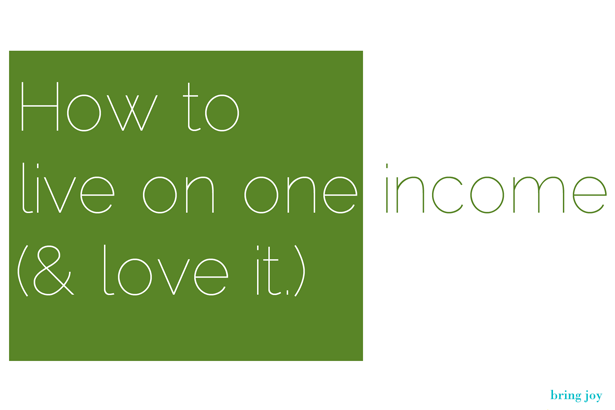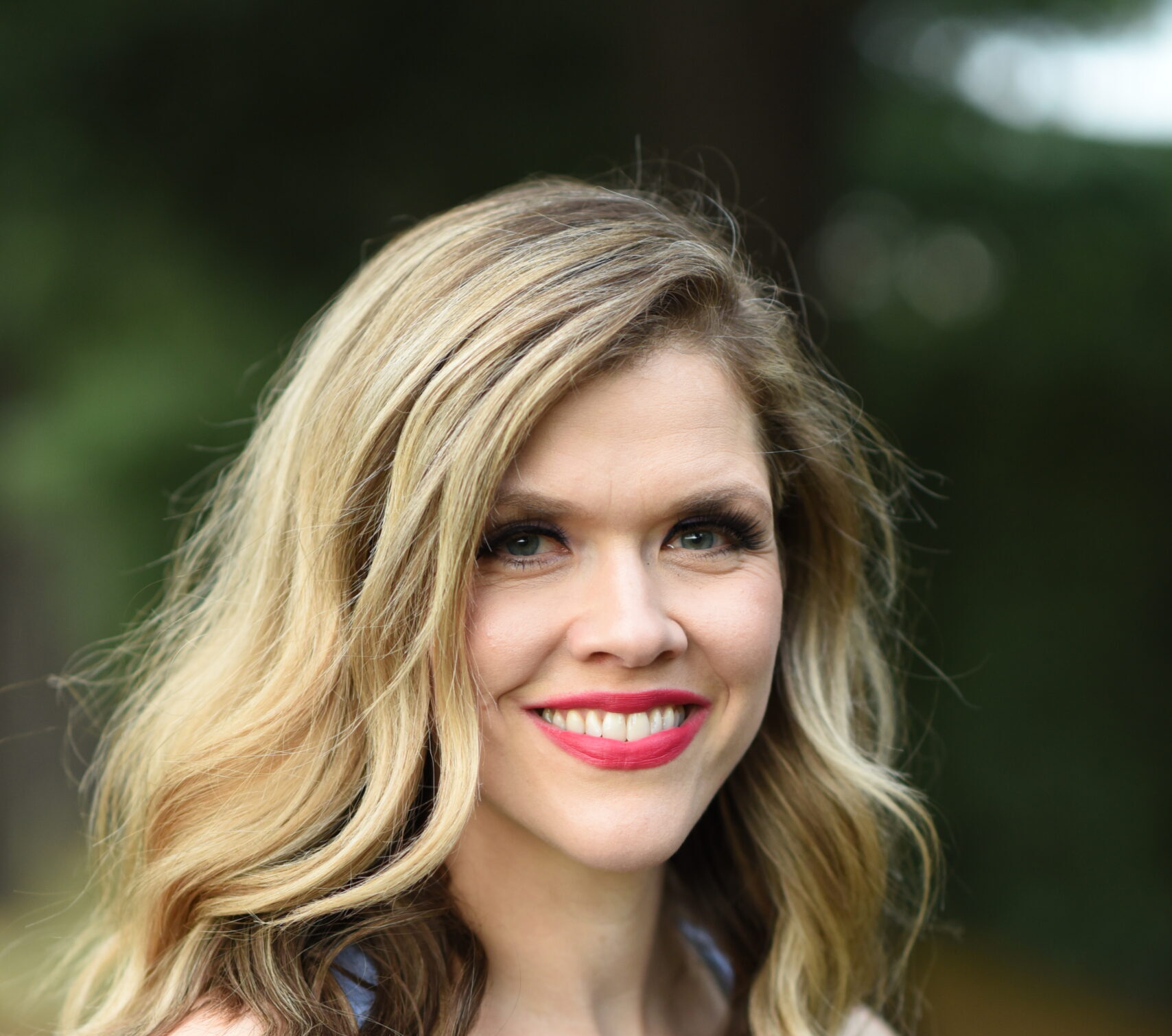Update 5/14: Since I wrote this post in October of 2013, I have begun to make some supplemental income for my family through blogging because of an online e-course called Rock Your Blog (affiliate link)–you can read a bit more about it in this post. Since I began implementing the principles learned there, I am making a part-time income, with the goal of being full-time within the next year. If you’re a blogger & want to know how you can make money from what you do as a blogger, I highly recommend this course. It connects all the dots, gives you the tools & shows you what you need to do to start making money from what you do. You can live on one income, but it’s certainly a blessing to be able to have supplemental income too!
Also see, out of debt: 5 steps, little things add up (5 ways I earn money)
We didn’t always live on one income. We weren’t always so fortunate.
For many years we juggled several part-time jobs, donating plasma (yes, that fit under the category of a job, & no, thank heavens, I was not the one donating), living on various stipends/student loans. There was a good year where Joseph taught high school & for a whole year we had a steady, sufficient income.
Now, though, the story is different. I no longer earn a paycheck, & Joseph has a job. Like, a real, grown-up job, one that can support a growing family.
“How exactly, can you afford so many kids?”
When I went to lunch with Gena last November, she asked me, something along the lines: “How do you afford kids?” It’s a fair question.
I remember a wise older man, a father of many children, from my church growing up who once said, “If you wait to have kids until you can afford them, you’ll never have kids. You can never ‘afford’ kids.”
Now that Joseph is the one bringing home the proverbial (vegan) bacon, I admit, at times it’s been hard for me to adjust to the fact that I no longer contribute financially.
But one day, I realized, hey, that’s not true.
He’s the offense, I’m the defense. He scores the points (ie. money) & I defend the bank account. I manage our finances so that every penny earned is put to good use. That right there, is 90% of how we afford kids.
As long as we’ve been married, I’ve pretty much taken care of the grunt work of the finances. I create the budget, I pay the bills. I do (most of) the grocery shopping. But Joseph & I talk about all of our purchases, we go over our budget on a regular basis (which is easy to do with mint.com). He’ll call me at the store to tell me he’s going to buy some DVD’s (true story. happened yesterday). Not to get my permission, but rather to tell me what he’s doing, what do I think about it. It’s our money, so we talk about everything we buy, be it big or small.
Equality
Let’s talk about equality, particularly equality as it applies in a marriage with children.
Equality, at least as I see it, is not as Sheryl Sandberg argues, “when half our homes are run by men and half our companies and institutions are run by women.” Nor is it as simplistic as suggesting that it’s achieved when both partners are earning an equal income.
Equality between the spouses, is a bit more nuanced.
It’s more than a title or paycheck, or a visible leadership position. It’s about respect, it’s about communication. At it’s heart, equality is about working together as partners, neither one spouse domineering or using their sex as an excuse for control, or to put it in religious terms, “unrighteous dominion.”
When Joseph & I married, we decided we wanted a big family.
We didn’t know (we still don’t know) exactly how many children, but we knew we wanted to be able to be in a place financially, where money would not hinder us from having more children if that’s what we felt like we should do.
Beyond that, we both feel strongly about having one parent stay at home. For the first 8 years, it wasn’t as cut & dry as one parent worked, one parent stayed at home. We worked together–Joseph worked, went to school, & helped with the child rearing. I worked & I helped care for our children.
It was a bit messy, but both of us learned how to work together. And we both came away from those years with a deep appreciation for the struggles (& joys) of working outside & inside of the home.
It’s my paycheck, too
Frugal habits begin with a respect for money. Each dollar in the checking account took time & effort to earn. It takes even more time & effort to make sure that those dollars, those pennies are spent judiciously.
And that’s my job. My job is to pay attention. Pay attention to when bills are due, what money is going where, & ask the questions: “How can save money on that purchase? Do we need it?”
Even though our monthly paycheck is made out in Joseph’s name, it’s my paycheck too.
I do the work that needs to be done at home so that Joseph can go to work & devote 100% of his time & attention to his job.
When there is only one income, both spouses work together to make that happen. It’s a joint effort, therefore, it’s a joint paycheck. Realizing this, is a big step in the direction of being equal partners.
I earn money when I save & it’s always easier to spend less than it is to earn more
Yesterday I did our monthly shopping trip to Costco. I spent $250 & saved $51 by using coupons for things like paper products, mouthwash, veggie burgers, & cereal. That’s a savings of 17%, on already really great prices, on items that I would have purchased anyway. I consider that $50, money that I earned.
“A penny saved, is a penny earned.”
A few other ways I “earn” money:
- Gas. I buy gas from HEB (a local grocery chain) & save $.12 a gallon by buying their pre-paid cards. I buy those prepaid cards with my credit card that earns 1% cash back on all purchases. So when I combine the two, I save about $.15 a gallon on already the lowest gas prices around. $.15 may not sound like much, but when you multiply that by 50 or more gallons a month, I save an average of $10 to $15 dollars a month. Not a lot, but it costs me nothing in time or effort to do this, & I’m saving (ie. “earning”) money.
- I’m a light hound. I turn off anything that uses electricity when it’s not necessary. I take advantage of natural light & have taught my kids to turn off lights when not needed. I put my computer on sleep when not in use during the day, shut it down at night. Unplug phone charges, blender, toaster, & other small appliances when not in use. Being careful about energy usage saves us $15-$20 a month. And it’s good for the environment.
- Fitness can be free (or nearly free). Since I’ve retired from teaching fitness classes (for the time being), I’ve missed the comradery of group fitness & I almost bought a gym membership. But then didn’t. I realized I can exercise for free by walking my kids to school, going swimming at our (free) community pool, by dancing with my kids, by doing my own workouts. I also have a subscription to GiamTV that gives me access to over a thousand yoga & fitness videos for only $10 a month (you can try a FREE 10-day trial + get the second month free by using this link). That choice saves us $80+ a month.
- Rice & beans, baby. I love rice & beans. Fortunately, so does everyone in my family. We eat some variation of rice & beans 3-4 days a week. Since this meal, with a side of fresh raw veggies, costs about $2 to make (& feeds 6), it saves us at least $50 or more a month.
- Canceled my nook subscription to the NY Times. I love reading the paper every day. For a few months, I was paying $21 a month for a NY Times Nook subscription. Then one day, I realized, duh, why don’t you just read it on the web? It’s free! Sure, it’s not as user friendly, & I have to put up with a few annoying ad pop ups once in a while, but is it worth saving $21 a month? Yes.
- Craigslist. For all that is good & holy, please give craiglist a try. You can get some amazing steals on items that people are dying to get rid of. Sometimes, barely even used! I’ve bought two Pottery Barn couches ($650); a Pottery Barn white kitchen table ($250); a lawn mower ($35); a nearly brand new sectional sofa ($300); and two sets of wooden bunk beds, a matching dresser, nightstand, & a bookshelf ($550). If I would have purchased these needed items brand new, I would have paid 3 X’s as much.
There are oodles of other ways we save money (maybe I’ll devote a whole post to it), but you get the idea. There are lots of ways to save a few dollars here & there. On their own, it doesn’t seem like much, but consider $100 a month saved adds up to $1200 in a years time.
Frugal is fun
It’s fun to save money.
It’s a mindset that has taken a few years, & few kids to really grasp, but I feel like once I realized that being frugal ultimately means more freedom, more time with my kids & husband, I realized that frugal really is fun.
♥♥♥
Do you live on one income? Do you have kids? How do you make it work?





Comments